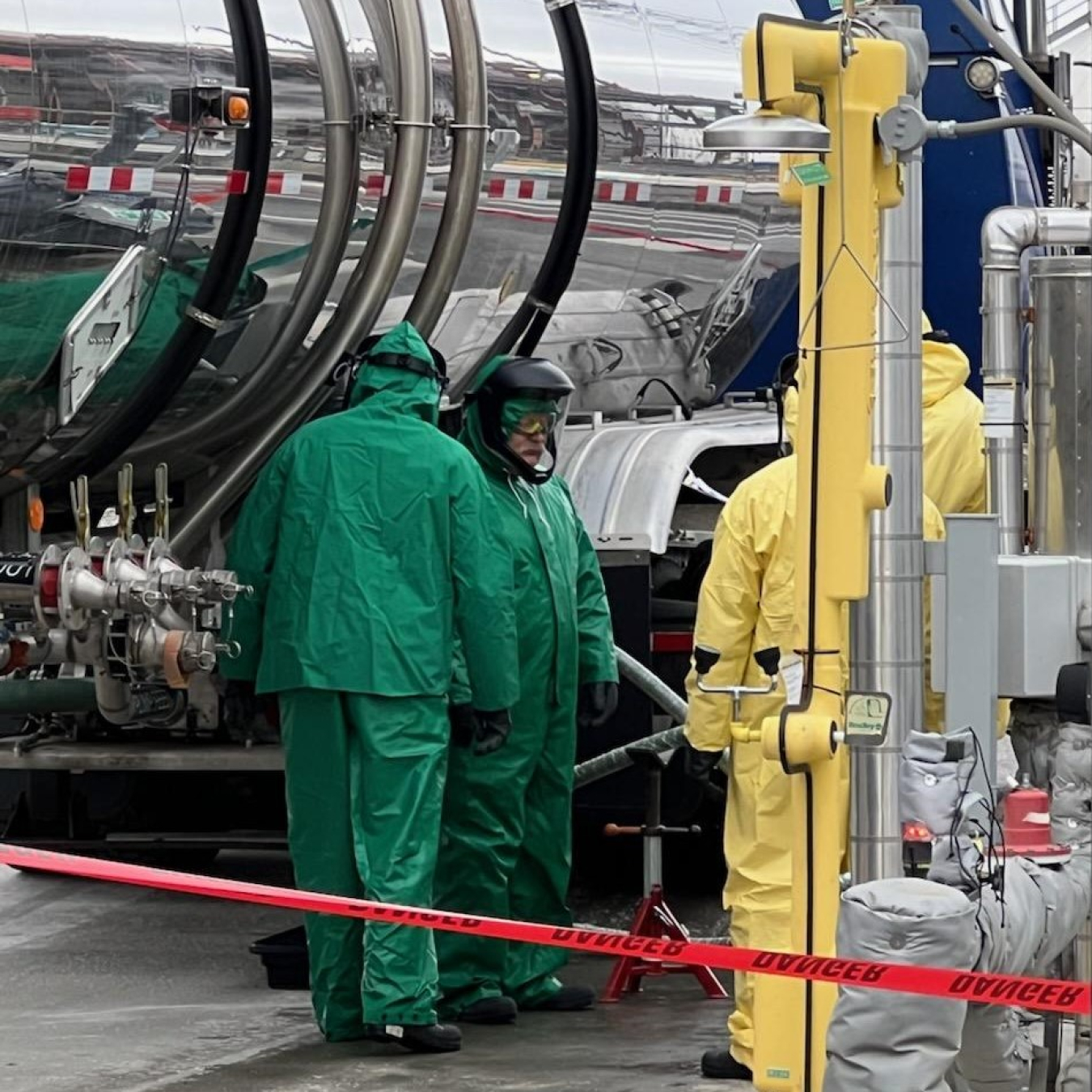he Hanford Site’s Waste Treatment and Immobilization Plant recently received more than 3,500 gallons of sodium hydroxide, commonly known as lye.
Office of Environmental Management
March 18, 2025RICHLAND, Wash. — The Hanford Site’s Waste Treatment and Immobilization Plant recently received more than 3,500 gallons of sodium hydroxide, commonly known as lye. Workers will use the chemical to treat hazardous gasses generated during the plant’s waste vitrification process, ensuring that plant emissions meet requirements from the Washington State departments of Ecology and Health. During vitrification, waste from Hanford's underground tanks will be mixed with glass-forming materials in high-temperature melters for safe disposal. In addition to treating emissions, workers use the chemical to simulate Hanford tank waste during melter testing. Many industries use sodium hydroxide as a versatile chemical. However, workers must treat it like other industrial chemicals: as a hazardous substance. To help ensure safe handling of the hazardous chemical, workers follow strict safety protocols, including storing it in an isolated tank at the plant.
To receive the latest news and updates about the Office of Environmental Management, submit your e-mail address.


